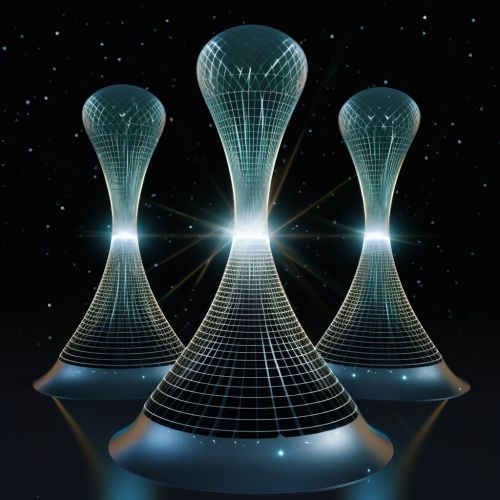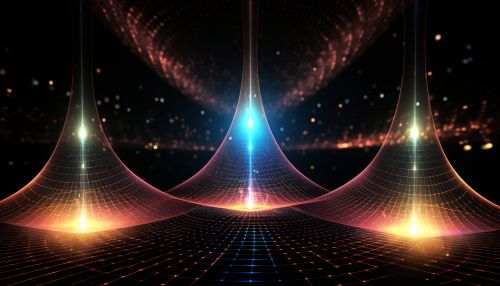Neutrino Oscillations and the Neutrino Mass Hierarchy
Introduction
Neutrino oscillations are a quantum mechanical phenomenon whereby a neutrino created with a specific lepton flavor (electron, muon, or tau) can later be measured to have a different flavor. The discovery of this phenomenon indicates that neutrinos have mass, which is not accounted for in the Standard Model of particle physics. This realization has led to extensive research into the nature of neutrinos and the potential implications for the Standard Model.


Neutrino Oscillations
The phenomenon of neutrino oscillations is a direct consequence of the fact that the flavor eigenstates (the states of definite flavor) are not the same as the mass eigenstates (the states of definite mass). This is analogous to the phenomenon of quantum superposition in quantum mechanics, where a particle can exist in multiple states at once, with the final state determined only upon measurement.
The probability of a neutrino changing flavor depends on the difference in the squares of the masses of the neutrinos, the distance the neutrino travels, and the energy of the neutrino. This is expressed in the formula:
P(να → νβ) = sin²(2θ) sin²(1.27 Δm² L / E)
where να and νβ are the initial and final neutrino flavors, θ is the mixing angle, Δm² is the difference in the squares of the neutrino masses, L is the distance the neutrino travels, and E is the energy of the neutrino.
Neutrino Mass Hierarchy
The neutrino mass hierarchy refers to the arrangement of the neutrino masses. There are two possible orderings: the normal hierarchy, where the third neutrino mass eigenstate is the heaviest, and the inverted hierarchy, where the third neutrino mass eigenstate is the lightest.
Determining the neutrino mass hierarchy is one of the major goals of current neutrino physics. This is because it has important implications for understanding the nature of neutrinos, the origin of neutrino masses, and the role of neutrinos in the evolution of the universe.
Neutrino Oscillation Experiments
Several experiments have been conducted to study neutrino oscillations, including the Super-Kamiokande, SNO, and KamLAND experiments. These experiments have provided strong evidence for neutrino oscillations and have measured the parameters that govern these oscillations.
The Super-Kamiokande experiment in Japan detected neutrinos from the sun and from cosmic rays hitting the atmosphere. The results showed a deficit in the number of muon neutrinos compared to the number of electron neutrinos, which is consistent with neutrino oscillations.
The SNO experiment in Canada also detected solar neutrinos, and it was able to distinguish between electron neutrinos and the other neutrino flavors. The results showed that the number of electron neutrinos was less than expected, while the total number of all neutrino flavors was consistent with expectations. This provided direct evidence for neutrino oscillations.
The KamLAND experiment in Japan detected antineutrinos from nuclear reactors. The results showed a deficit in the number of detected antineutrinos, which is consistent with neutrino oscillations.
Implications for the Standard Model
The discovery of neutrino oscillations has profound implications for the Standard Model of particle physics. In the Standard Model, neutrinos are massless, but the existence of neutrino oscillations implies that neutrinos have mass.
This has led to the development of extensions to the Standard Model that include neutrino masses. One of the most popular extensions is the so-called "neutrino minimal Standard Model" (νMSM), which adds three right-handed neutrinos to the Standard Model.
Determining the neutrino mass hierarchy is also important for understanding the nature of neutrinos. If the normal hierarchy is true, it would suggest that neutrinos and antineutrinos behave differently, which could help explain the matter-antimatter asymmetry in the universe.
